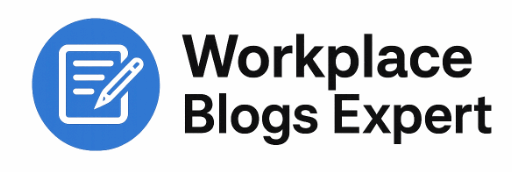How HR Creates an Effective Work Environment

Creating an effective work environment is one of the most critical responsibilities of Human Resources (HR). A well-designed workplace not only enhances productivity but also boosts employee satisfaction, reduces turnover, and fosters innovation. HR professionals play a pivotal role in shaping the organizational culture, policies, and tools that make this possible..
Understanding the Role of HR in the Modern Workplace
HR is no longer just about hiring and payroll management. Today, HR is responsible for designing an environment where employees feel motivated, supported, and empowered to perform at their best. According to the U.S. Department of Labor, effective HR strategies directly influence organizational performance by aligning people management with business objectives.
Key responsibilities include:
-
- Ensuring compliance with labor laws and workplace safety standards
-
- Promoting diversity, equity, and inclusion
-
- Implementing tools and processes that streamline workflows
-
- Supporting employee well-being and career growth
Leveraging Technology for a Productive Workplace
Modern HR teams rely heavily on technology to create efficient work environments. Digital workplace software enables seamless communication, centralized data access, and automated workflows. These tools help HR manage policies, onboarding, and training while keeping employees informed and engaged.
For instance, using a team collaboration software allows departments to work together on projects in real time. Employees can share files, track progress, and provide instant feedback, reducing bottlenecks and improving team cohesion.
Similarly, a task management tool helps employees prioritize responsibilities, meet deadlines, and maintain accountability. Clear task allocation reduces confusion and ensures everyone knows their role in achieving organizational goals.
Enhancing Communication and Engagement
Communication is the backbone of any effective work environment. A robust digital communication strategy ensures that employees receive timely updates, feedback, and recognition. HR can implement tools that streamline announcements, team discussions, and virtual meetings, keeping employees connected even in hybrid or remote setups.
Employee engagement is equally important. An employee engagement tool allows HR to measure satisfaction, collect feedback, and design initiatives that resonate with staff. Engaged employees are more productive, innovative, and committed to the company mission.
Payroll and Administrative Efficiency
One often overlooked aspect of an effective workplace is administrative efficiency. A payroll portal platform simplifies salary processing, tax compliance, and benefits management. When employees are confident that their compensation and records are accurate, they can focus more on their work rather than administrative concerns.
HR Policies that Support a Positive Environment
Policies are the foundation of workplace culture. HR must design guidelines that are transparent, fair, and consistent. Policies on flexible working hours, remote work, harassment prevention, and professional development contribute significantly to a positive work environment.
Government resources such as USA.gov provide HR teams with updated information on labor laws, safety regulations, and employee rights to ensure compliance and fairness. HR can also align policies with emerging digital workplace trends, such as remote work and flexible schedules, to create a supportive environment.
Training and Career Development
Investing in employee growth is a direct investment in the organization. HR should facilitate training programs, mentoring sessions, and career path planning. Platforms like Wikipedia’s article on Human Resource Development explain that professional development not only improves skills but also increases job satisfaction and retention..
Building a Culture of Recognition and Support
A strong workplace culture values recognition and support. HR can implement reward programs, peer-to-peer acknowledgment, and feedback systems that highlight contributions. When employees feel appreciated, morale improves, and collaboration thrives.
Conclusion
Creating an effective work environment requires a holistic approach. HR must combine technology, clear policies, engagement strategies, and career development to foster a productive and motivated workforce. By leveraging tools like digital workplace software, team collaboration software, digital communication, task management tool, employee engagement tool, and payroll portal platform, organizations can ensure their employees have the support and resources they need to succeed.
A thriving work environment is not just a benefit for employees; it directly impacts business performance, innovation, and long-term growth. Effective HR practices transform workplaces into spaces where employees are motivated, connected, and engaged, leading to success for both individuals and the organization as a whole..
